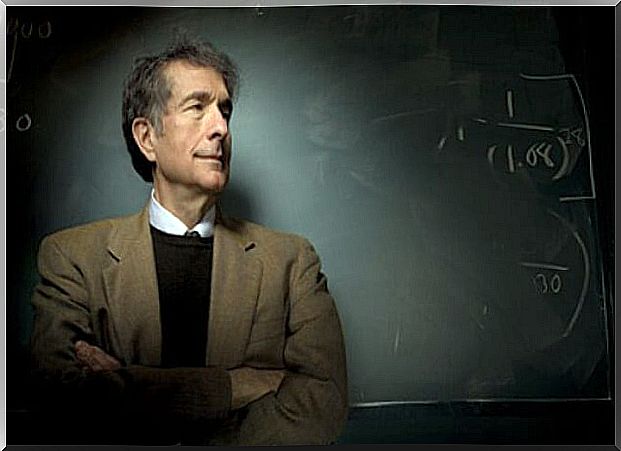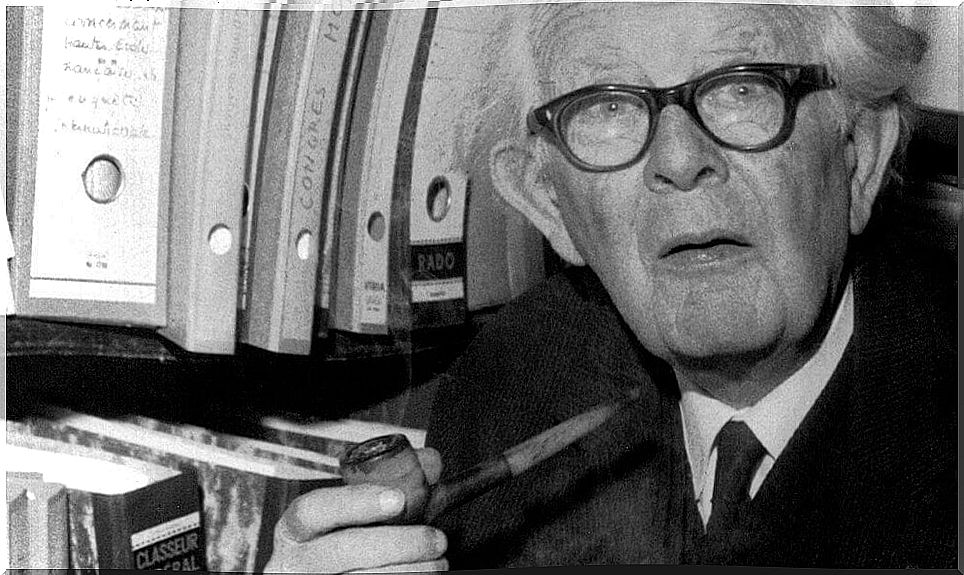Cognitive Psychology: What Is It And How Did It Come About?

Cognitive psychology is currently one of the most influential and effective therapies used to help people recover from mental disorders. While “cognitive” is not a common term, it is very common in the world of behavioral science.
For anyone unfamiliar with psychology, it might help to see “cognitive” as a synonym for knowledge or thought.
Cognitive psychology is therefore the study of human behavior focused on unobservable, mental aspects. They are aspects that lie somewhere between the stimulus and the observable response.
More understandably, cognitive psychology seeks to know what ideas are blooming in the patient’s mind and how they influence his emotional and behavioral response. How do these ideas influence how the patient feels and what he does about it?
What is the purpose of cognitive psychology?
Today, cognitive therapy is often used to solve all kinds of psychological problems. This is because it involves observing how these cognitions or thoughts influence the patient’s behavior. In many cases , these cognitions even determine their behavior.
Thus, treatment from this perspective is aimed at identifying those thoughts, beliefs, and mental schemas that do not correspond to reality and, in some cases, are exaggerated. It works by having a debate that asks questions that question these cognitions.
First of all , the individual or patient must identify and question their own beliefs. Then he will be willing to reformulate them and create new cognitions. Hopefully it is cognitions and thoughts that are more in line with objective reality.
The cognitive revolution
In the 1950s, the prevailing paradigm was behavioral psychology or learning psychology. And these psychological currents have also succeeded in explaining many psychological phenomena.
Yet they were still quite limited, as they could only explain the observable. Everything between stimuli and response was considered an epiphenomenon. It was the so-called behavioral ‘black box’ and was seen as irrelevant to observable behavior.
When the behavioral approach reached a dead end, people began to attach importance to other phenomena. For example, the phenomena that occur in our minds between the moment we receive a stimulus and the moment we give a response.
That’s when researchers started studying the processes of reasoning, language, memory and imagination.

The same happened with Sigmund Freud’s psychoanalysis, another movement that was popular at the time. This movement, too, was unable to provide an answer to many mental disorders. Despite how revolutionary it was.
Broadly speaking, there are some lines of research that led to the rise of cognitive psychology, such as:
- The advances in computer science and computer processing (Turing, Von Neumann…) that made it possible to create machines that are programmable and can make decisions. They did this by making something similar to the human mind and how it could process information.
- Advances in Cybernetics, led by Wiener.
- The theories of information by Shannon, who saw information as a choice and reduction of alternatives.
Which authors created cognitive psychology?
As we explained earlier, cognitive psychology grew out of the limitations of behaviorism. Which, for example, could not explain why there are people who react differently, even if they have received the same conditioning. The best-known representatives who gave cognitive psychology a place in the world of behavioral sciences were:
FC Bartlett
He was the first professor of experimental psychology at the University of Cambridge. His main postulate was the theory of mind systems, by which he argued that thoughts, like memories, are processes that can be reconstructed.
By reading fables to the people who took part in his studies, he discovered that they could not memorize them verbatim, even though the stories were read aloud repeatedly. What he also found, however, was that these people were more likely to remember things that fit into their previous mental patterns.
Jerome Bruner
For this author there are three forms of learning: the enactive, the iconic and the symbolic form. He established that a theory of instruction should focus on four important aspects.
- Predisposition to learn
- The ways in which a collection of knowledge can be structured
- The sequences in which material is presented
- And the nature and rhythm of reward and punishment
The most important part of his theory was this: a student would learn more and faster if he was involved in the knowledge he was trying to acquire and apply.
Gardner
He formulated the famous theory of multiple intelligences, according to which intelligence is the ability to organize thoughts and coordinate them through actions. Every person would have at least eight kinds of intelligence or cognitive skills.
These intelligences are semi-autonomous, but they work as a team (integrated) within the mind of the individual. Also, each person will develop one type of intelligence to a greater extent than the other, due to its cultural emphasis on it.

Jeffrey Sternberg
Sternberg is best known for his triangular theory of love, which holds that perfect love is composed of three elements: intimacy, passion, and commitment.
However, he also developed the triarchic theory of intelligence, which says that intelligence is a mental activity aimed at adapting to, selecting and shaping relevant environments of the subject in question. According to Sternberg, you could demonstrate intelligence by looking at how each of us faces or promotes change.
David Rumerlhart
Rumerlhart is a very influential author who developed the theory of mental schemes. According to Rumerlhart , mental schemas are representations of general concepts that are stored in memory and that help us organize the world.
His theory explains how the world is represented in our minds. Then also how we use that information to interact with the world.
Jean Piaget
Piaget is one of the most important authors in the field of cognitive psychology. He formulated the theory of cognitive development in stages. These phases are characterized by having qualitatively different logical structures. Structures that represent certain capacities and impose certain limitations on children.

There are many more representatives of cognitive psychology, such as Vygotsky, Erickson or Ausubel that deserve a place on this list. In any case , their contributions revolutionized psychology.
What these men did has allowed psychology to make great strides. The behaviorism is still relevant, even in combination with cognitivism.
However, cognitivism has caused great advances in our knowledge from decades ago. It has improved the treatment of various mental disorders. In this way, depression is much more treatable.
However, cognitive psychology is not exempt from limitations either. Reasonable criticism that focuses on the assumption that mental processes and behaviors are separate from each other. Or, more accurately, that mental processes precede our behavior.









